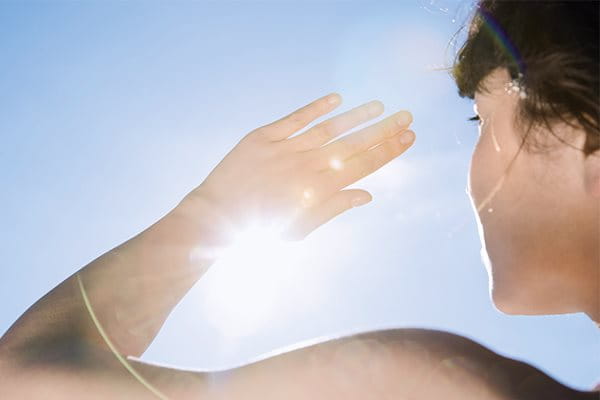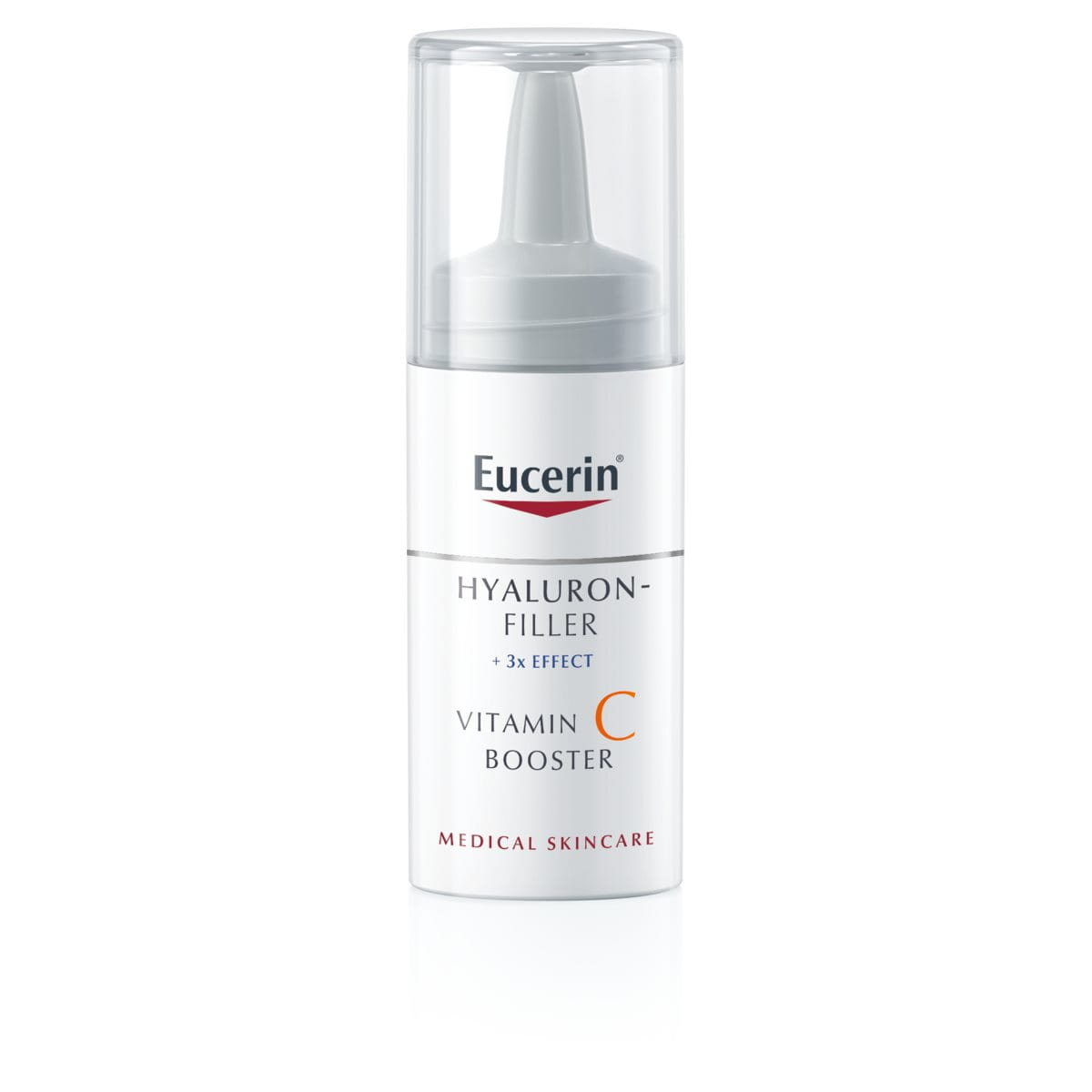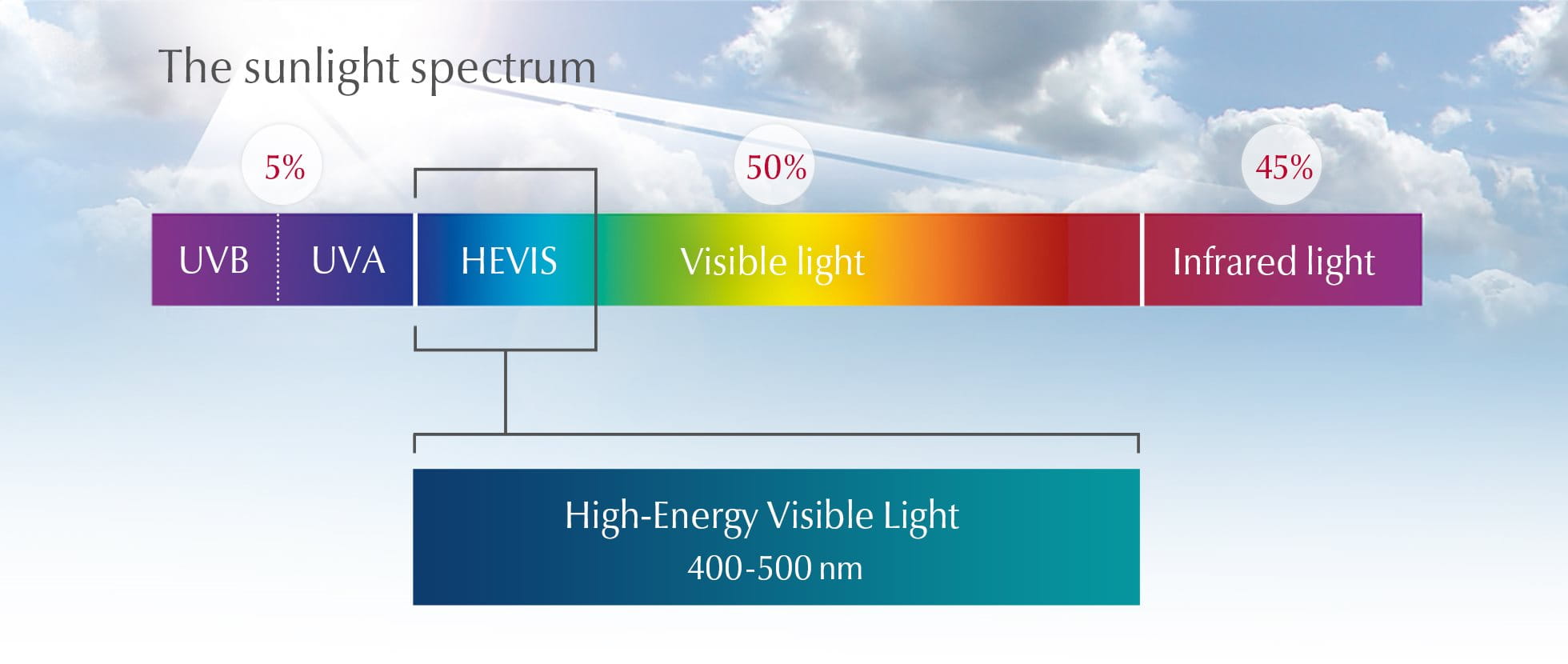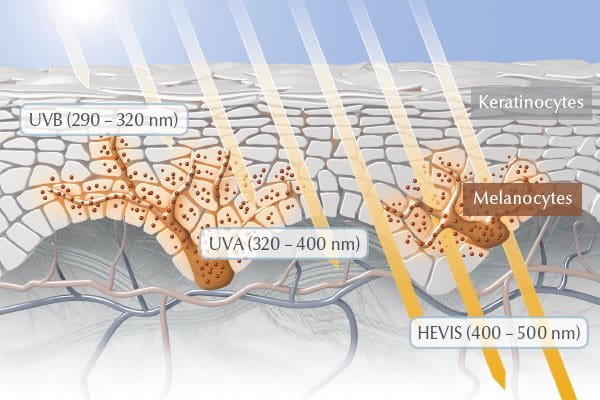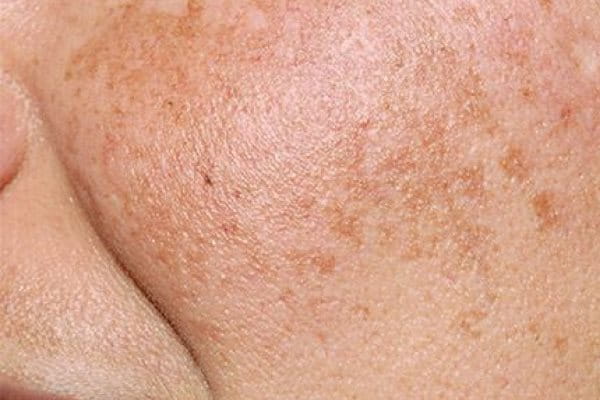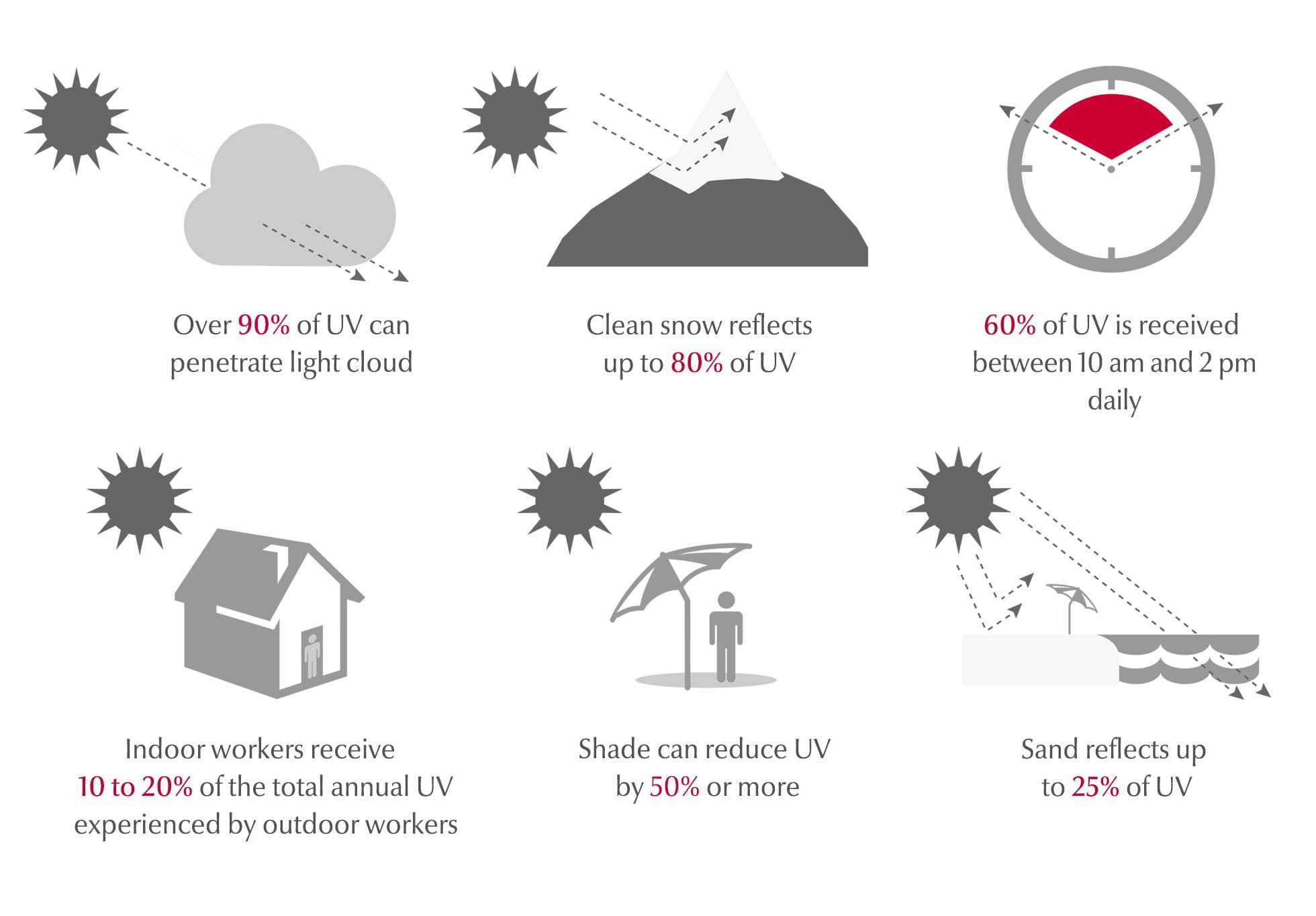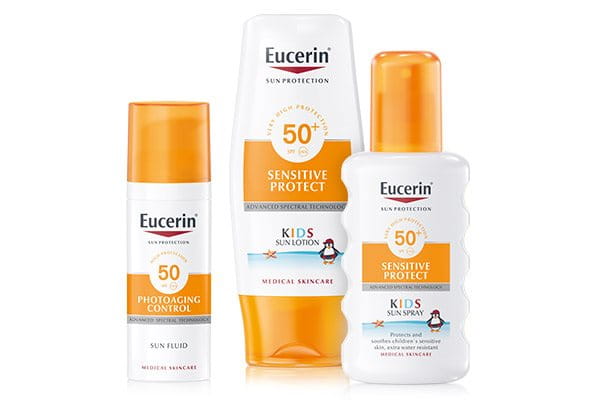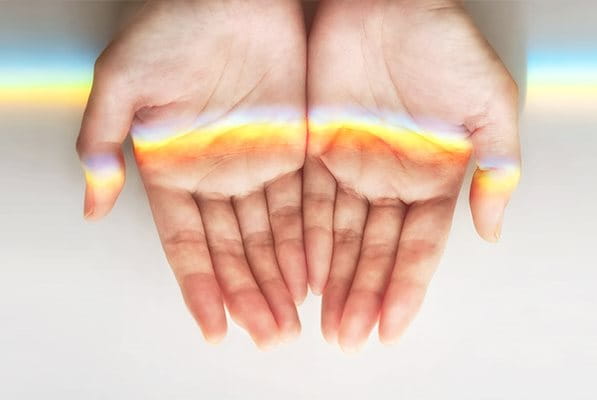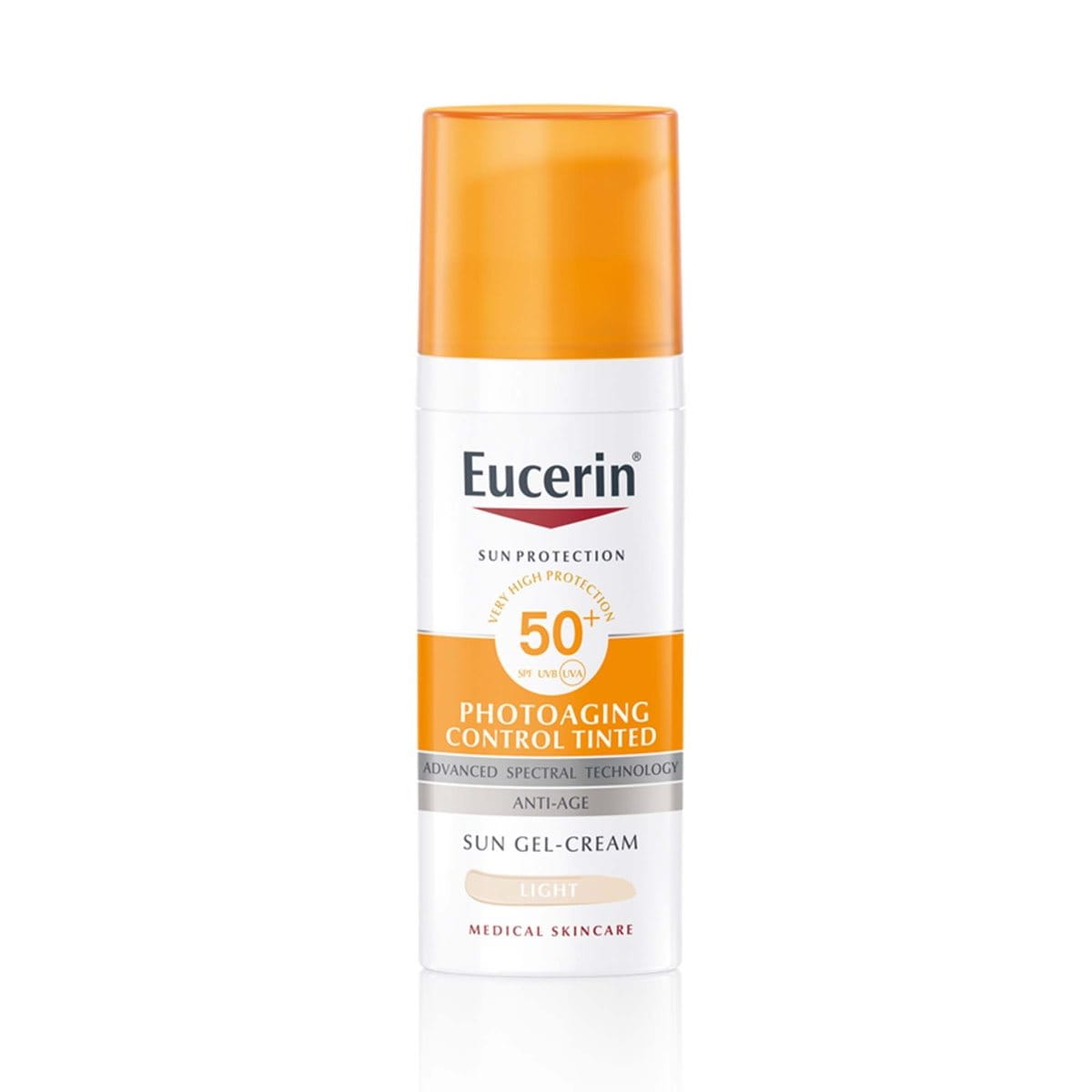Ultraviolet light is invisible to the human eye and comes in three forms: ultraviolet A (UVA), ultraviolet B (UVB) and ultraviolet C (UVC).
UV light has a shorter wavelength than visible light. UVC rays have the shortest wavelength (of between 100 and 290nm). They are blocked by the earth’s atmosphere and so don’t reach the skin. UVA and UVB rays have a wavelength of between 280nm and 400nm, though UVA has a longer wavelength than UVB. Together they make up about 5% of the sun’s rays.
UVA rays are less intense than UVB, but there are 30 to 50 times more of them. They are also present constantly, with relatively equal intensity, during all daylight hours throughout the year. UVB rays, however, fluctuate throughout the day and are at their strongest at noon. Both pass virtually unhindered through cloud and smog.
